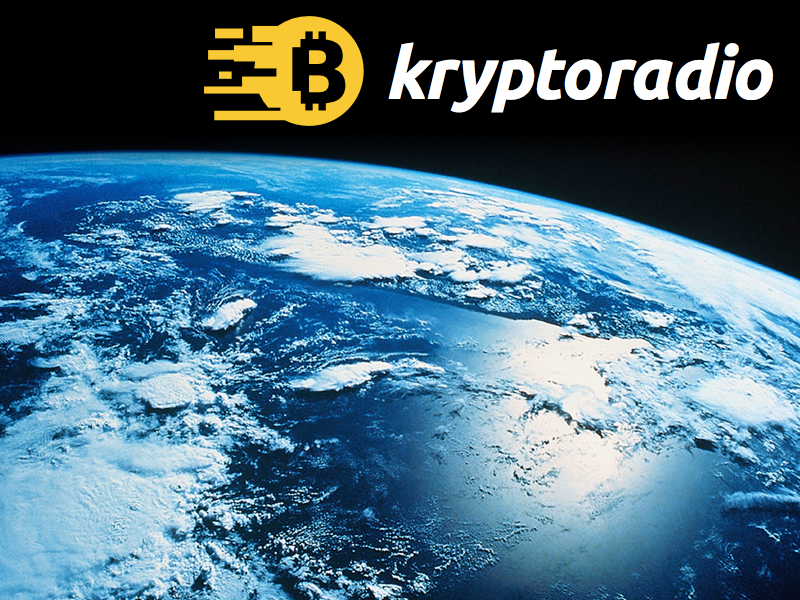If you don’t know what Kryptradio is already, read up on my fellow colleagues work, that should explain most of it. Its an excellent technology, and really shows how far Bitcoin can go, we just have to guide it there. I personally find this technology very exciting and will personally follow it closely for any updates.
1. What sparked the idea of Kryptoradio?
In March this year I was experimenting with the Bitcoin protocol. I wanted to create my own Bitcoin node which downloads all transactions and blocks as they come and logs everything to my hard drive.
At that point it was not doing anything very useful. Then I realized that the same data could be just sent over the radio. Then it took me more than two months to actually figure out that the Digital TV would be the way to go.
2. What is Kryptoradio?
Kryptoradio is a Bitcoin transport system which allows users and machines to keep track of their account balances without Internet connection just by listening to the Digital TV broadcast. Also, the broadcast can be used to make Bitcoin network more resistant to cyber attacks because it is difficult to shut down the Bitcoin P2P network and the broadcast simultaneously.
3. How does sending Bitcoin through DVB-T work?
You cannot actually send Bitcoins via DVB-T. Bitcoins can be received via DVB-T and it can be used to verify when a payment is actually registered to the Bitcoin ledger (the book of committed transactions). This means that every Bitcoin transaction in the world is transmitted via Digital TV as well.
The payee needs some kind of uplink when sending financial transactions. The data volume is low, about 500 bytes per transaction. It is possible to build SMS wallet services if an ordinary Internet connection is unavailable.
In a normal Bitcoin payment both the payee and the merchant must be connected to the Bitcoin network. Kryptoradio lifts the requirement from the merchant. It is still payee’s job to transfer the Bitcoin transaction to the network.
It is important that the merchant can operate without network connection because the terminals can be made simpler and they can operate without mobile data subscription. The terminals will be more inexpensive to build and operate.
No monthly or per-transaction fees are required. Receiving Bitcoin payments using Kryptoradio can be compared to GPS navigation: a car driver does not need to send data to the satellites!
4. Can sending Bitcoin say via Bluetooth or radio work as well?
Bluetooth range is 10–100 metres depending of the hardware used. It can be used to do short distance data transfer.
However, some have used Bluetooth to transmit signed bitcoin transactions from payee to payment terminal when the distance is only some metres. This approach is not perfect, because it requires an uplink to the Internet anyway, because the transaction must be added to the Bitcoin ledger somehow.
5. Current Status?
The software used in the transmitter is almost complete. However the receiver is missing many features and requires almost a month of work. But I’m quite sure we can do it before pilot transmissions start at the beginning of September.
6. Would this be able to scale well?
Digital TV has lots of bandwidth. We can use the same technology when everyone on this planet uses Bitcoin in their daily lives. The bandwidth costs much more then, but it is still a fraction of what is the infrastructure cost of the current banking system.
(source: https://en.bitcoin.it/wiki/Scalability#Network)
7. How private is it? Would people stay as anonymous through using the internet or say a mixer or TOR?
Kryptoradio makes it possible to receive Bitcoins without any trace because you don’t need any subscription or transmitter to receive Bitcoins and keep track of your wallet.
All you need is a DVB-T receiver (which costs about 20 USD), and software on your computer. Because Kryptoradio transmissions come from the same towers that are used to broadcast the TV channels as well, no extra aerials are needed. No one can tell if you use your antenna for watching TV, receiving Bitcoins, or both!
8. Are there limitations to this?
The biggest obstacle is making this global. We need to make contracts with a broadcaster in each country we want to operate in. Going to countries where DVB-T is not used, like North America and Japan, requires further development but is entirely possible.
9. Future Development plans?
After the pilot transmission period we plan to start permanent broadcasting here in Finland and start transmissions in other countries if we find suitable partners and funding. We also continue developing the technology to use public broadcasting for totally unprecedented ways.
For more information: http://kryptoradio.koodilehto.fi
